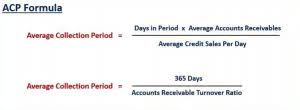
A cost-accounting method would probably be better operationally to address that shrink issue. Oliver Chen, managing director and senior equity research analyst at TD Cowen, for years has touted the value of replacing RIM with the cost method of accounting. Judging by explanations given by multiple companies in their annual reports, the retail inventory method, or RIM, is employed because of its “practicality” and widespread use in the industry.
- One notable distinction is the prohibition of the Last-In, First-Out (LIFO) method under IFRS, which is still permissible in the United States.
- The retail inventory method is a more manual process, designed when we didn’t have barcodes or computers.
- Standard costs are estimated averages based on historical data and expense budgets.
- Markups must comply with accounting standards like GAAP, which require accurate reporting of revenue and inventory values.
- It assumes consistent markups and does not account for specific inventory items, which can reduce its precision compared to other methods.
- Given that Kellogg’s produces mostly perishable goods, it shouldn’t come as a surprise that they use the just-in-time inventory management method for an efficient stock inventory system.
- When it comes to retail inventory management, accurately valuing your stock is essential for maintaining profitability.
Conventional Retail Inventory Method
- Retail accounting is great for businesses with simple pricing and consistent markups.
- The average cost method involves calculating an average cost per unit for all items in inventory.
- By understanding these nuances and applying the method accordingly, retailers can ensure accurate stock valuations, optimize inventory management, and drive profitability in their respective categories.
- This table concisely compares the critical differences between the Retail Inventory Method and the Cost Method, highlighting their distinct approaches to inventory valuation and management.
- Net sales are calculated by deducting sales returns, allowances, and discounts from gross sales.
- This information is crucial for financial reporting purposes, as it allows businesses to determine the cost of goods sold and the value of remaining inventory.
The retail method estimates ending inventory by applying a cost-to-retail ratio to the retail value of unsold inventory. retail accounting This approach is particularly useful for businesses with high sales volumes and frequent inventory turnover. It enables swift calculations and is often used for interim financial reporting or when physical inventory counts are not feasible. RIM provides an estimate of inventory based on retail prices, including permanent markups or markdowns. It was especially handy for larger businesses like department stores with lots of merchandise of various types. Different costing methods, such as First-In-First-Out (FIFO) or Average Cost, can significantly impact your stock valuation.
- Accounting standards like GAAP require that cancellations be reflected in the financial period in which they occur.
- By gaining these insights into your inventory value, it’ll be much easier for your brand to create a budget that supports its long-term growth (brands that use Cogsy generate 40% more revenue on average).
- For example, your business buys water bottles for $10 each and sells them for $25.
- Furthermore, the retail inventory method provides valuable insights into the profitability of a business.
- It works best for businesses with similar products, big vendor deals, and quick sales.
What is the Retail Inventory Method?
Using the retail inventory method to calculate stock you have in a warehouse saves you the hassle of going to the warehouse to count it (or spending money to have the warehouse employees count it). Also, the cost of merchandise in your warehouse is usually consistent—there are no sales or price cuts like you have in-store—which leads to more accurate results with the RIM calculation. Counting inventory manually is easy when you sell large, big ticket items, like mattresses or boats. However, it’s more complicated when you run a store with many SKUs, like a boutique or grocery store, for example. This inventory accounting method is a shortcut to estimating your stock’s value.

Disadvantages of the Retail Inventory Method

Bringing in too little means missed sales, so most buyers will order somewhat above their plan. In fashion and other sectors where changing tastes, styles and/or seasons affect demand, this is especially tricky. One of https://www.bookstime.com/ the main benefits of the RIM is that it supports you in exercising inventory control. This means the retail inventory method ties products directly to their sales and then provides an ending inventory count (without much additional work on your end). The FIFO method calculates inventory value based on the COGS of your oldest inventory. FIFO assumes that the oldest items purchased are the first items sold, and older inventory items are less expensive than recent purchases.
- In most cases, the retail method of accounting is not realistic because of the variations in product pricing.
- Among these methods, the retail method of accounting stands out as a practical tool, especially for businesses that deal with high volumes of inventory.
- With these tools, retailers can maintain up-to-date inventory estimates, improve accuracy, and reduce the workload on accounting teams.
- You only need to track retail sales, cost of purchases, and markup percentages for each category.
- The retail method is an inventory estimation technique used in retail businesses to determine the value of ending inventory.
- The retail inventory method can be used with LIFO (last in, first out), FIFO (first in, first out), or the weighted average cost flow assumption method.
- Furthermore, the integration of data from diverse systems can lead to discrepancies in cost tracking and inventory management.
Markups must comply with accounting standards like GAAP, which require accurate reporting of revenue and inventory values. Retailers also need to consider market conditions, competitive pricing, and consumer demand when setting markups. Strategic management of markups ensures profitability while maintaining compliance with financial reporting requirements. Clothing and apparel retailers often face challenges in inventory management due to the ever-changing fashion trends and seasonal demands.

Retail Inventory Method: Definition, Calculation, And Example
After all, this method isn’t always accurate because losing or damaging a fraction of your stock is unavoidable. The total amount of sales is subtracted from the total retail value of the beginning inventory them multiplied by the cost-to-retail-ratio in order to determine the total inventory of a store. When it comes to accurately valuing stock in the retail industry, the retail inventory method (RIM) is a commonly used technique. However, it is essential to understand that different retail categories may require slight adjustments and considerations when applying this method. In this section, we will accounting explore how to effectively implement the retail inventory method in various retail categories, providing examples, tips, and case studies along the way.
